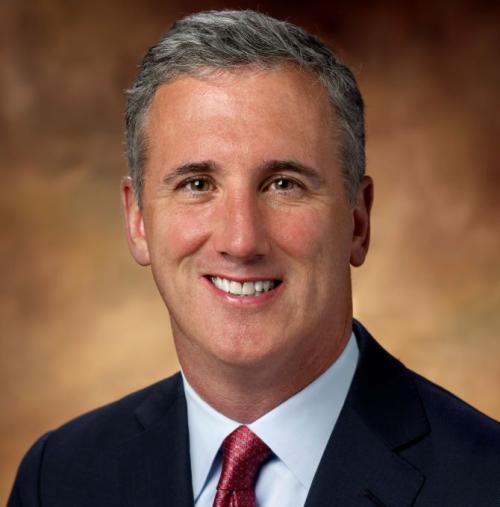Dodd-Frank requires implementation of recoupment plans but there are alternatives to the traditional clawback policy
With the signing of the Dodd-Frank Wall Street Reform and Consumer Protection Act, corporate incentive compensation recovery policies have once again been thrust front and center into the public discourse on executive compensation. As a result of Dodd-Frank, federal law now requires broader usage of incentive compensation recovery policies at public companies. Consequently, compensation committees at these institutions are facing the unenviable task of not only figuring out how to meet the minimum requirements of Dodd-Frank, but also how to develop an effective incentive compensation recoupment program.
No doubt the solution that compensation committees are going to hear repeatedly is 'clawback,' as if a clawback policy was a self-executing cure-all and the only approach to compensation recoupment. Certainly, clawback policies represent one approach to recoupment, but each compensation committee needs to address the following questions:
- Do clawback policies represent the most effective way to fulfill the Dodd-Frank mandate to recover unearned excess incentive compensation? and:
- Should a clawback policy represent the first and only line of defense with respect to recovering unearned excess incentive compensation?
To answer these questions, a compensation committee should consider: The specific incentive compensation recoupment requirements of Dodd-Frank; The differences between these new requirements and the compensation recovery provisions of the Sarbanes-Oxley Act (SOX); and The legal and practical issues undermining the effectiveness of clawbacks.
In reaching their answer, many compensation committees will likely determine that clawbacks standing alone are good in theory but ineffective in practice. These committees will then turn to their professional advisors to provide them with alternative approaches to fulfilling Dodd-Frank’s recoupment requirements. Advisors, in this position, should consider discussing with their clients the advantages of utilizing a 'holdback' approach. Under this alternative approach, the incentive compensation is not actually placed in the executive’s possession until after it is reasonably clear that no restatement of the company’s financials will require compensation recoupment.
Dodd-Frank/SOX comparison
As a result of Dodd-Frank, new Section 10D to the Securities Exchange Act of 1934 requires the SEC to adopt rules directing the US stock exchanges to modify their listing standards to prohibit the listing of any company that does not develop and implement an incentive compensation recoupment policy which:
1. Is triggered by an accounting restatement due to material noncompliance with the company’s financial reporting requirements;
2. Covers any current or former executive officer who received incentive compensation during the 3-year period preceding the date the company was required to prepare an accounting restatement; and
3. Will recover any ‘excess’ incentive compensation paid to an executive officer as a result of the erroneous financial data.
The incentive compensation recoupment requirements of Section 10D differ from existing requirements under SOX in several significant respects. First, the group of executives subject to mandatory compensation recoupment has been substantially expanded from only the CEO and CFO under SOX to any current or former executive officers under Dodd-Frank. In the absence of clear guidance from the SEC, the term "executive officer" presumably means a company’s: president; any VP in charge of a principal business unit, division or function of the company (such as sales, administration or finance); and any other officer who performs a policy making function or any other person who performs similar policy making functions for the company.
Second, Dodd-Frank does not require any executive to have committed ‘misconduct’ to trigger the compensation recoupment obligation. In contrast, SOX not only requires misconduct to trigger the recoupment obligation, but was, until recently, interpreted by the SEC to require misconduct by the individual from whom recoupment was sought. However, the SEC has now begun to seek to use SOX to recover compensation from corporate officers who are not alleged to have otherwise violated the securities laws.
Third, Dodd-Frank expands to 3 years the period for which compensation may be recovered and also seems to change how the recovery period is calculated from a forward-looking period under SOX (12 months following the initial filing of the financials that are eventually restated) to a backward-looking period under Dodd-Frank (3 years preceding the date the company was required to restate the financials).
Fourth, Dodd-Frank only seeks to recover incentive compensation in ‘excess’ of what should have been paid based upon the company’s restated financials – in effect merely trying to ensure that the compensation was in fact fairly earned rather than attempting to punish certain executives for the company’s failure to have correct financials.
Finally in requiring that each company develop and implement its own incentive compensation recovery policy, Dodd-Frank would seem to create a private right of action for enforcement (i.e., shareholders can sue to enforce) because the recovery right is a contractual agreement between the executive and the corporation. In contrast, courts have frequently held that there is no private shareholder right of action under SOX.
Non-qualified deferred compensation plans
The principal vehicle for effectuating a holdback approach is a non-qualified deferred compensation (NQDC) plan. In its simplest form, an NQDC plan is a written agreement between an employer and one or more of its executives that provides for the deferral of the executive’s base compensation and/or incentive compensation. This deferral can be either voluntary or mandatory.
Amounts deferred under an NQDC plan are credited to an individual account for the executive, and the deferral account is typically credited with hypothetical earnings and/or losses on certain ‘measurement funds’ (typically mutual funds or equivalents) from which the executive may select. These deferred amounts and hypothetical earnings and/or losses are then distributed in accordance with pre-established payment triggers. Internal Revenue Code Section 409A limits these payment triggers to the following events: a specified date, a change in control of the company, the occurrence of an unforeseen emergency or the executive’s termination of employment, disability or death. Importantly, so that the executive is not currently taxed on the deferred compensation or any of the hypothetical earnings, no actual assets are transferred to the NQDC plan and the executive holds the status of a general creditor of the employer in the event of the employer’s bankruptcy or insolvency.
Structure and operation of a holdback plan
So what would a company need in order to embrace the “holdback” approach to compensation recovery?
• A corporate policy stating that all incentive compensation awards are required to be mandatorily deferred (in full or in part) into the company’s NQDC plan; and
• A NQDC plan with the following two features: (a) a vesting provision; and (b) an ‘adjustment’ provision.
Under this holdback approach, instead of the executive receiving an annual incentive payment outright that may then need to be ‘clawed back,’ each individual subject to the mandatory deferral policy would simply receive a credit to his or her deferral account in an amount equal to the incentive amount awarded to the executive under the applicable bonus or commission program. No credits would be made if the performance metrics under the applicable bonus or commission program have not been satisfied. Once credited to the NQDC plan, the incentive compensation amount would be subject to the plan’s vesting and ‘adjustment’ provisions.
In order for the NQDC plan to act as a holdback plan, it would need to incorporate a vesting provision that would clearly state that the incentive compensation amount is not deemed earned or payable until the expiration of the vesting period. This structure essentially creates a mandatory holding period to guard against the possibility that the executive’s incentive compensation award was miscalculated as a result of an incorrect financial statement or other comparable problem. For purposes of Dodd-Frank, corporate compensation committees should ensure that the non-qualified plan has a minimum vesting period of 3 years. However, a longer vesting period may be appropriate if consistent with other corporate goals.
The holdback plan would also need to have a mechanism to ‘recover’ any excess incentive compensation credited to the executive’s account. In a holdback plan, that recovery mechanism would be the adjustment provision.
By way of illustration only, an 'adjustment' provision might provide as follows:
'Prior to vesting, an incentive compensation amount for a plan year, plus amounts credited or debited on such amount, shall be reduced (as necessary to reflect actual performance) in the event that it is determined by the employer, in its absolute discretion, that the incentive compensation amount for that Plan Year was incorrectly calculated as a result of (i) a misstatement of the financial results upon which the Incentive compensation amount was calculated and/or (ii) the failure to achieve an applicable performance metric upon which the incentive compensation amount was calculated.'
Consequently, if during the vesting period there is a downward financial restatement such that the recoupment obligations under Dodd-Frank are triggered, the plan’s adjustment provision would be triggered and the executive’s deferral account balance for the year the performance metric was not achieved (or underachieved) would be reduced to match the actual, achieved results – thus effectively recovering the 'excess' incentive compensation in accordance with Dodd-Frank.
Misplaced faith: Reliance on clawbacks alone
With proper planning, a holdback plan can be structured to meet the objectives of the Dodd-Frank compensation recoupment provisions. But that does not answer the question: Why should a compensation committee embrace (or at least consider) a holdback approach? The short answer: Because the enforcement of clawback provisions can be extremely problematic.
First, the executive subject to the clawback has to have the continuing financial wherewithal to pay the company back. That is, once the executive has cashed, spent and paid taxes on the bonus check, will there be assets to recover? This could be particularly problematic when recovery needs to be made from former executive officers. In contrast, under the holdback approach, the financial circumstances of the executive are not relevant as the compensation has not yet been paid out.
Second, state creditor and wage protection issues may come into play preventing enforcement of the clawback. In contrast, the vesting provision of the holdback plan should prevent the deferred incentive compensation from being considered “earned” and, therefore, from being ‘wages’ subject to protection.
Finally, clawbacks may have significant costs for enforcement as they often require a lawsuit to enforce. In contrast, the adjustment mechanism which enforces the recoupment in a holdback plan requires a mere debiting of the executive’s deferral account. This factor could be particularly important in circumstances where the company’s policy requires the corporation to seek recoupment, but enforcement costs would likely exceed the amount of the ‘excess’ compensation to be recovered.
Consequently, when compared to clawbacks alone, holdbacks should not only improve a company’s likelihood of recovering the excess incentive compensation, they should also do it in a more cost-effective and efficient manner.
A combined approach
Given the significant issues discussed above, compensation recoupment programs should be designed so that reliance on clawbacks as a stand-alone policy is minimized. If clawbacks are to be used, they should be used as part of a comprehensive compensation recoupment program that also includes holdbacks. Essentially, the goal should be to design a program in which the clawback policy is a mere backstop to the holdback element of the NQDC plan. Accordingly, the clawback policy, as a backstop, would generally only come into play if the company’s recoupment policy mandated that only a portion of the covered executive’s incentive compensation be mandatorily deferred into the company’s NQDC plan and the “excess” incentive compensation required to be recovered under Dodd-Frank exceeded this amount.
In short, while clawback policies should continue to be a part of each compensation committee’s discussion on incentive compensation recoupment, compensation committees would be well served to consider developing and implementing a comprehensive compensation recoupment program that addresses both the front-end (holdbacks) and the back-end (clawbacks) in order to eliminate their corporation’s reliance on a single line of defense.








